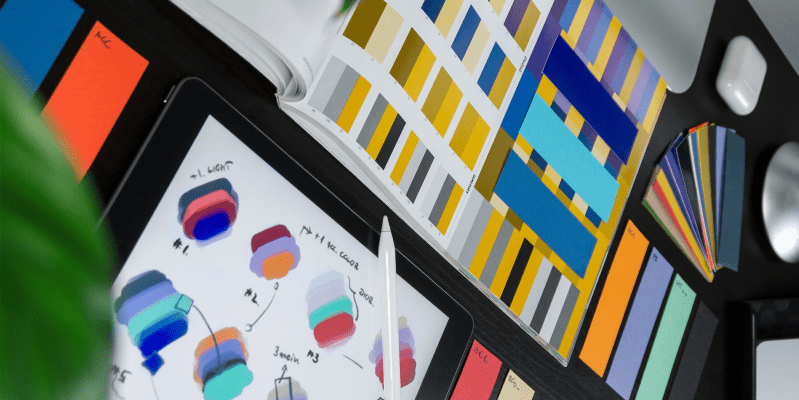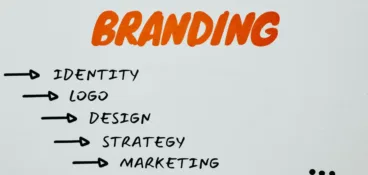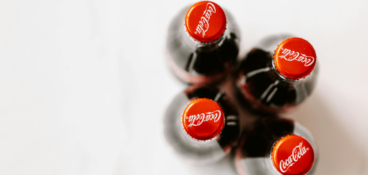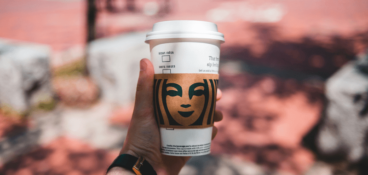What made Amazon, Apple, Google, Microsoft, and Walmart the most valuable brands in 2023? How did Apple rack up a brand value of $299.3 billion? What’s the secret behind McDonald’s incredible brand recognition score of 98?
Product branding plays a major role.
Building a strong product brand is the secret to standing out in a sea of competitors and winning the hearts of your consumers.
And when we consider that 94% of consumers recommend brands they have an emotional connection with, that’s a pretty big deal.
Creating a standout identity for your product can establish your business as a top player in your industry. But, if it were easy, everyone would be doing it.
To help you nail your product branding strategy and drive business growth, I’ve put together this survival guide. It’s perfect for creative agencies, big brands, and start-ups looking to position their product properly.
Keep reading to learn:
- A brief product branding definition and its core elements
- The business benefits of having a solid product identity
- How to nail your product branding strategy and win more customers
- The most successful product branding examples of all time
Product branding explained
Product branding builds a unique identity for your product, making it stand out from competitors. It gives people a feel for your product and what they can expect before they buy it.
This helps people form emotional connections with your product. And I don’t need to remind you how important these emotions are for the buying process.
According to Harvard Professor Gerald Zaltman, 95% of purchasing decisions are subconscious. Author Zhecho Dobrev backs this up. After interviewing thousands of customers, he found that emotional connection is the single biggest driver of value, making up 43% of business value.
Mars is an excellent example of why product branding is essential.
It’s responsible for some of the most iconic products in your home, including M&Ms, Skittles, Royal Canin, and Dove.
But each of these products has its own, very unique brand. I mean, who can forget M&M’s iconic “It melts in your mouth, not in your hand!” slogan?
Compare that to Skittles’ “Taste the Rainbow” or Dove’s “Let’s change beauty” corporate branding campaign, and we can see how one company can create distinct personalities for each subsidiary brand or product.
Supercharge your marketing reviews
Share, review, and approve all your content in one place with Filestage.
The core elements of product branding
Product branding has a lot of moving parts. That said, we can break it down into three major components.
Brand name and logo
It all starts with a memorable and visually appealing logo. More importantly, the logo should capture the essence of your product right away.
The right logo design can be the difference between potential customers picking your product or your competitor’s.
Statistics from G2.com show that it takes just 50 milliseconds for consumers to judge your brand’s visual appeal. And the color of your logo can be a dealbreaker.
Research from the Pantone Color Institute found that 90% of snap judgments about a product are based solely on color. Interestingly, a signature color can boost corporate brand recognition by as much as 80%.
Not sure whether your logo is doing enough?
Take a cue from Apple, Coca-Cola, FedEx, Google, and Nike. Consumers rate their logos as the most visually appealing. Customers instantly recognize these products when they see their logos, and the graphics and colors work in harmony to create a cohesive identity.
Nike’s iconic tick regularly tops the charts as the most visually appealing logo design of all time.
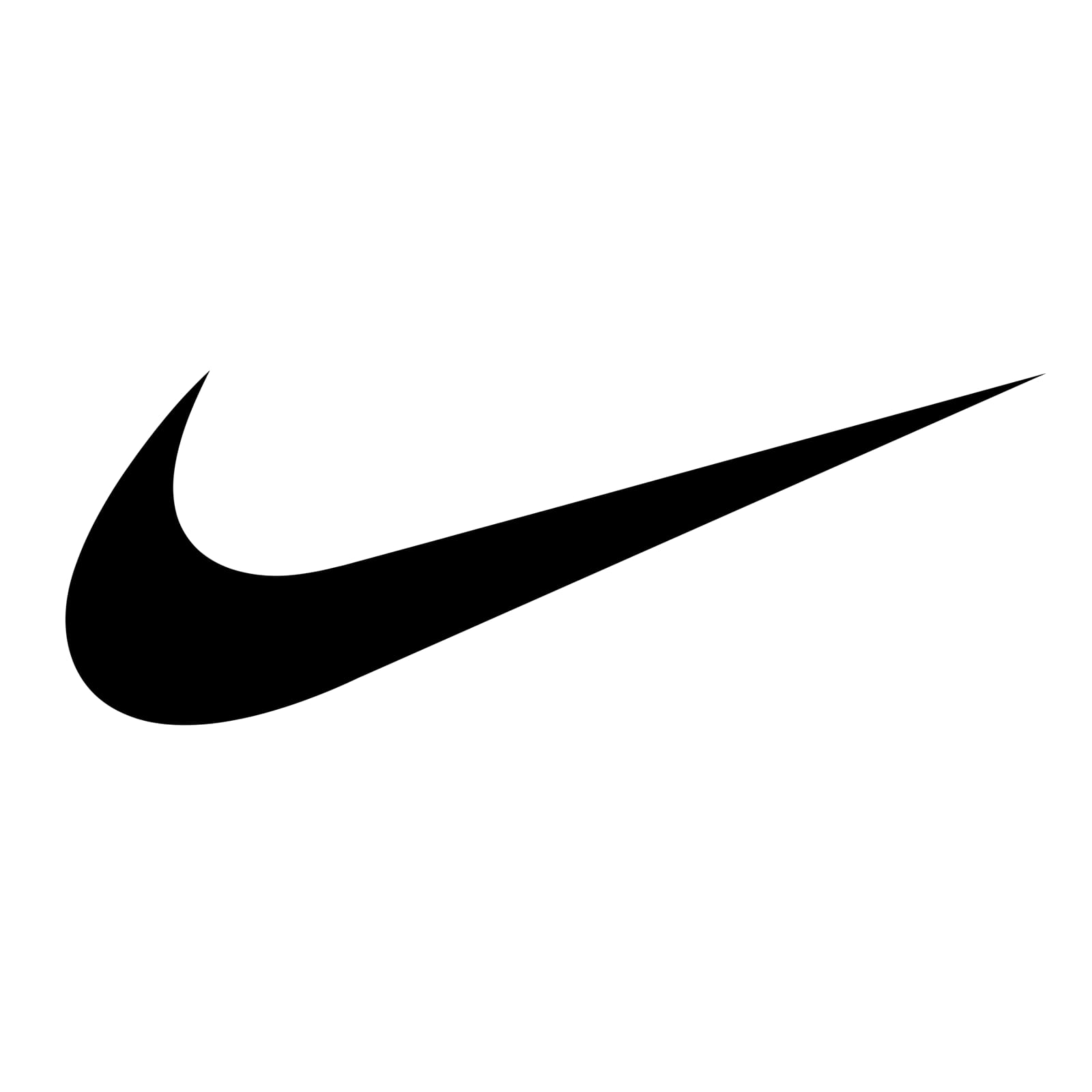
Product packaging design
Your product’s packaging design is more than just a container. It’s a major part of the brand experience, attracting customers and sharing the details of your offering.
Let’s take a trip back in time to 1966.
A chemist called Fredric Baur invented the now legendary Pringles canister and showed us all how creative packaging can put your product in a league of its own.
Before you go and redesign your product packaging, there’s one thing to remember: the beauty of the Pringles can is that it’s functional first and foremost.
It solved the problem of chips being crushed before they got to the consumer.
The Pringles packaging design is functional and gives it a strong brand identity.
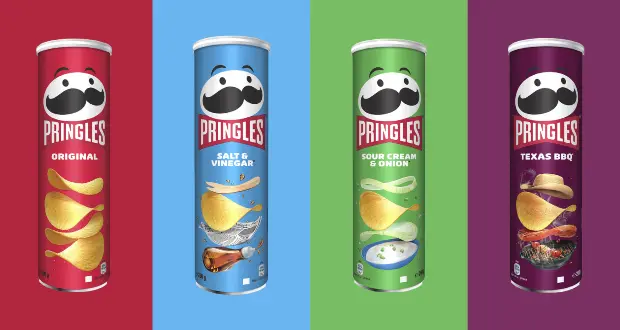
This focus on functionality, as well as creativity, is exactly why Heinz’s up-side-down squeezy bottle also works so well.
For others, like Toblerone, the mystery behind the packaging choice remains.
And while you’re thinking about packaging, take some time to consider your point of sale experience too.
Messaging and positioning
Successful product branding clearly communicates who it’s for, why it’s special, and how it makes consumers’ lives better.
And to get this right, you need to define brand messaging and positioning first.
Ted Morgan said it best when he compared positioning to “finding a seat on a crowded bus.”
Ted Morgan’s take on brand strategy and positioning is popular among marketers and business owners.

The idea is to carve out a space in your customer’s mind by setting yourself apart from similar products on the market.
According to marketing maverick Harry Dry, you can do this in a number of ways:
- Pit yourself against the mainstream or status quo
- Shake off the fence-sitters (they don’t buy anyway) with strong values like Patagonia did with the “Don’t buy this jacket” Black Friday campaign
- Create your own category where you don’t have any competitors (like when Loom refused to become just another screen recorder and became the leader in “video messaging for work”)
- Pick a niche or feature and run with it
Patagonia’s “Don’t buy this jacket” ad shakes off the fence sitters and showcases its strong values.
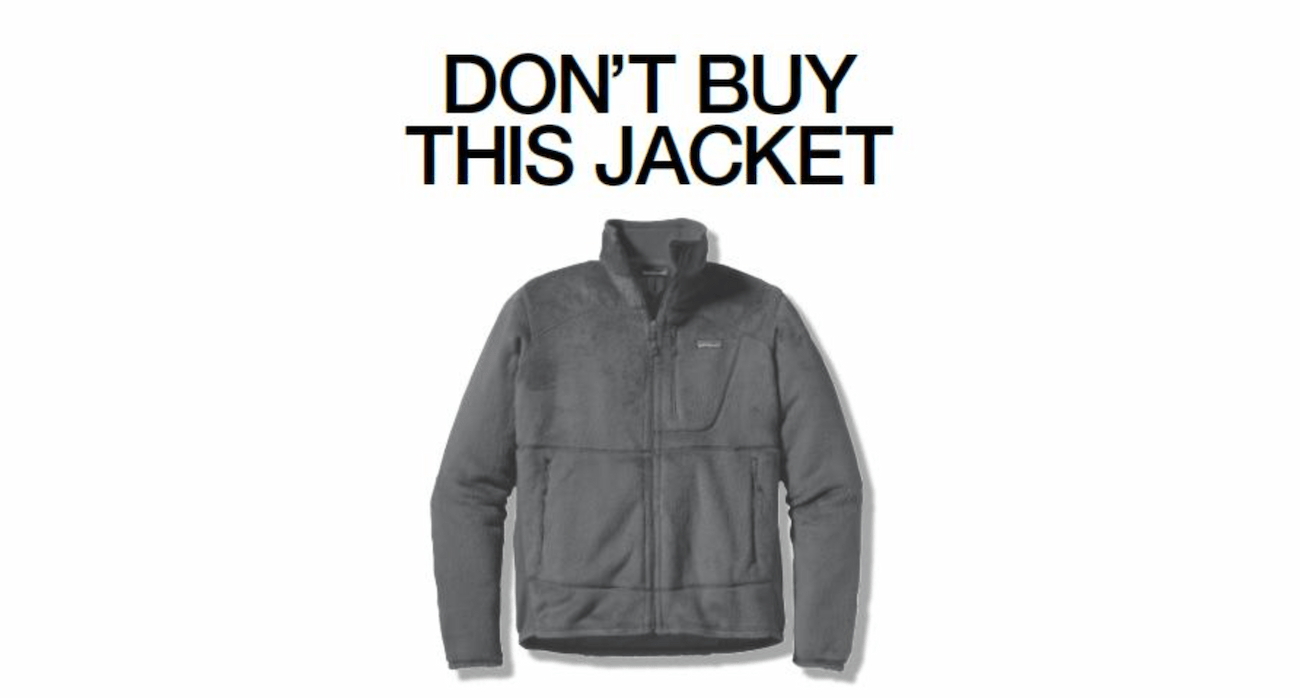
Remember that behind every good positioning line is an even better story. So start there.
Research by Headstream shows that people are 55% more likely to purchase your product in the future and 15% more likely to buy it immediately if they love your brand story.
As you can see, a lot goes into product branding. But if you can differentiate yours from the competition, hone in on a target audience, and create an instantly recognizable product, you’re onto a winner.
Why your product branding strategy matters
There’s a reason why the most successful brands in the world pay agencies millions of dollars every year for product rebrands. It’s because it pays off.
Stellar product branding makes it easy for you to:
- Increase brand awareness and create a product that’s easy to identify among its competitors and lookalikes
- Target a specific sub-audience within your larger target market
- Build credibility and consumer trust
- Use this credibility to expand into new markets or product categories
- Create potential for premium pricing
- Give your business a competitive advantage
You share more authentic messages when you know your audience and market your product directly to them. You also build trust.
And considering 81% of consumers say they need to trust a brand to buy from them, that’s a big incentive to get your product branding approach right.
Another report from Stackla shows that 86% of consumers think authenticity is critical when deciding which brands to support.
How to nail your product branding strategy in four steps
It doesn’t matter if you’re a creative agency, a startup, or a billion-dollar global corporation. How you brand your product is do or die.
It’s the difference between being a market leader or going bust. So, if you think your current brand strategy needs the kiss of life, follow these four steps.
1. Research everything. Twice.
I’m sure this comes as no surprise to you, but the biggest and brightest product brands in the world have one thing in common. They know exactly who their audience is.
So, before you even think about product branding, it’s time to do some deep detective work.
Don’t stop until you can answer these questions:
- Who is my audience?
- What are their pain points?
- What do they think about the world?
- What do they care about?
Use customer interviews, market research, social media analytics, and focus groups to get the answers you need. Take this information and see how well your product matches your customers’ needs and where it fits in the market.
That leads to a product analysis.
What are the unique features of your offering? How do they benefit your target audience? How does your product differ from the competition?
Next, tackle the market, industry trends, and your competitors.
Doing this is the best way to create a unique message and a “feeling” for your product brand. You’ll then use this to define your visual product identity.
2. Define your product’s personality
Your product’s identity needs to align with your brand message and values. So, now’s the time to take all your research from step one and put it to good use.
This is easier said than done, especially for mundane products. But nailing this step in the product branding process is huge. After all, this personality will influence everything, from pricing to packaging design to marketing strategy.
If you’re trying to give your product a personality and coming up empty-handed, try taking a leaf out of no name’s book.
Canadian low-cost supermarket no name nails its product branding with its unique brand voice.
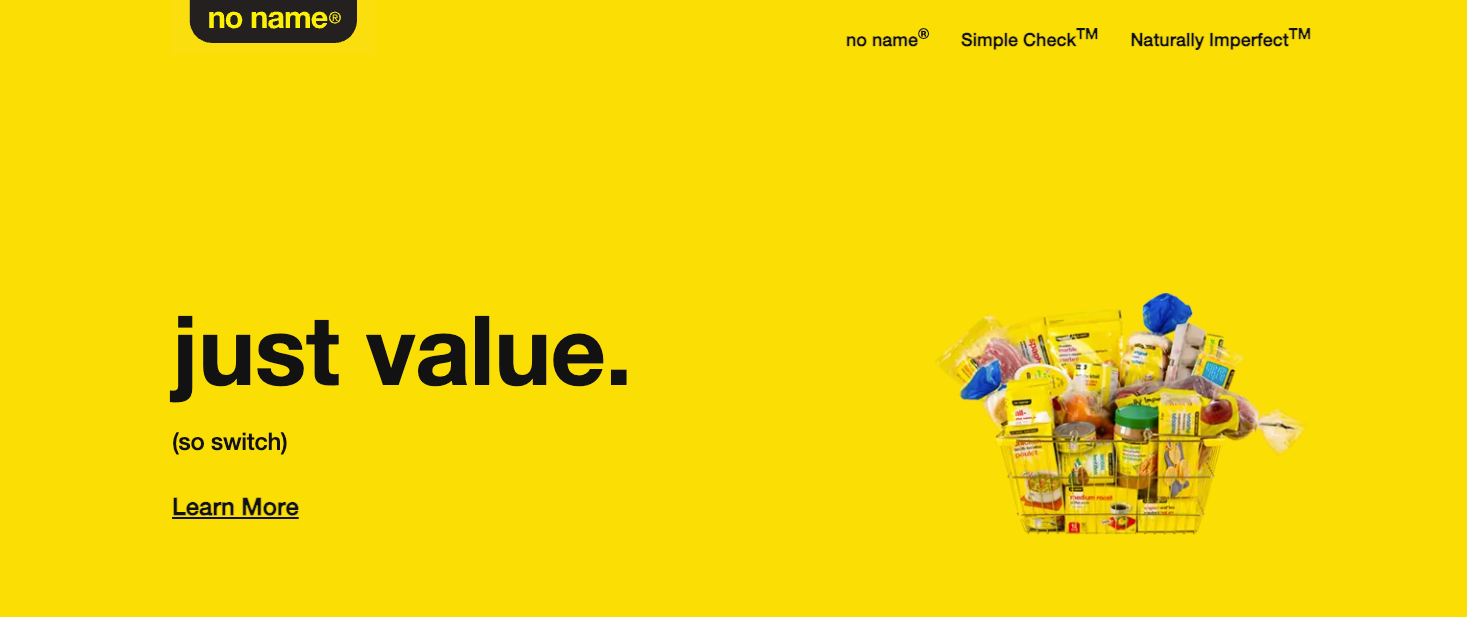
The Canadian brand no name is just another discount “no frills, no nonsense” supermarket chain. It’s hardly a revolutionary product or concept. There are similar discount grocery stores all over the world.
But no name’s corporate brand strategy has differentiated it in a crowded market and given it a cult following. As a brand, it has developed an ingeniously simple personality. And it sticks with it.
Its “anti-brand” stance is clear to see on its simple yellow packaging, and even its Instagram page follows suit with hilarious, tongue-in-cheek posts that match the product packaging.
No name’s product branding is infused into everything from packaging to social media content.

3. Be consistent
Did you know that while 85% of organizations have brand guidelines, only 30% stick to them consistently? This is hands down one of the biggest mistakes you can make with your product branding strategy.
There’s a reason why the most successful businesses in the world religiously stick to their visual identity. It works.
A Lucidpress study revealed that consistent brand presentation across all touchpoints can boost revenue by as much as 23%.
The average person has to see a brand between five and seven times before they start to recognize it. This is precisely why consistency matters.
When your marketing images, packaging design, quality, stories, and messaging are consistently cohesive, your target audience will recognize your product faster.
And when this happens, they’re more likely to form a deeper connection with your product and trust your brand more.
4. Protect your rep
The final hurdle before you reach product branding domination is the not-so-glamorous business of compliance.
Picture this.
You’ve created an impeccable product branding strategy, nailed the execution, and presented it to the world. But there’s an error or inconsistency. 🤦♀️
One little typo on your packaging could lead to expensive recalls. Even worse, incorrect labeling or messaging could result in legal issues and financial repercussions.
A proper review and approval process is the secret to keeping your product branding consistently awesome (and compliant).
Online proofing software like Filestage automates this workflow, cutting the approval process by 30%.
More importantly, it makes sure all the necessary stakeholders properly review your product packaging and marketing content.
In the quick video below, our CEO shows you how it works.
With Filestage, you can easily:
- Invite reviewers at different stages of the design review process
- Annotate and leave feedback on artwork, packaging designs, and graphics
- Consolidate and track all revisions on a single deliverable
- Compare document versions side-by-side to check all changes have been made
- Manage version control to make sure you never use an outdated content piece
- Kill the dreaded email-forwarding feedback cycle
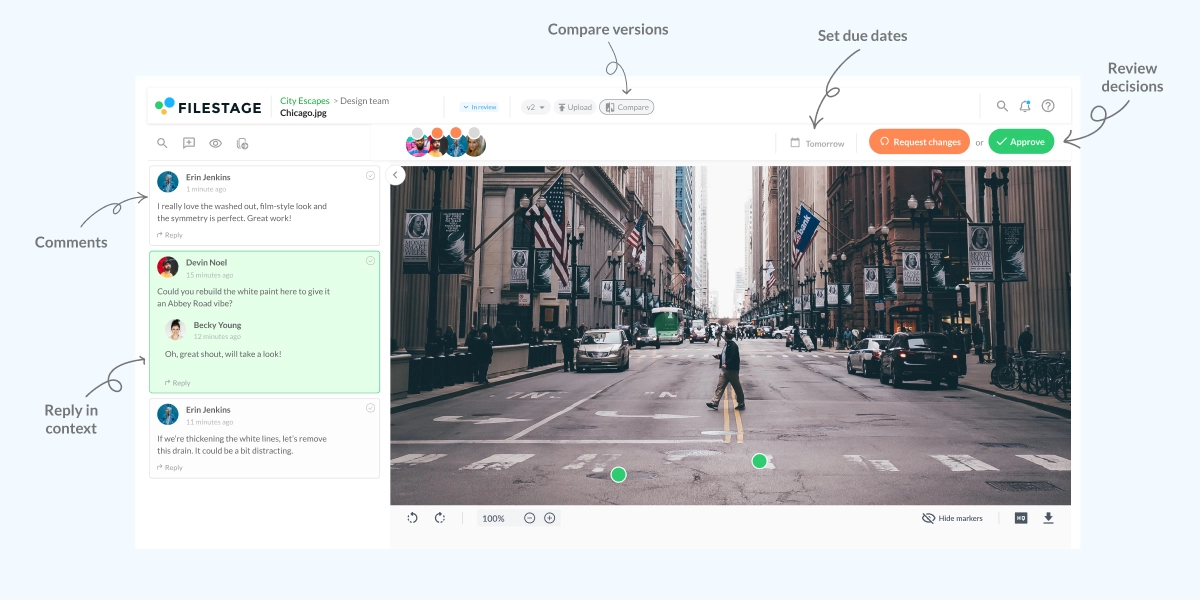
Filestage’s AI-driven features automate the review and approval process, helping you catch costly marketing errors.
The best product branding examples of all time
If you’ve still got a few question marks about your own product branding strategy, why not take some advice from the big guns?
These five companies are killing it, and here’s how you can get in on the action.
Coca-Cola
I can’t make a list of product branding excellence without Coca-Cola. The undisputed King of Soda, Coca-Cola, has been at the top of its game (and the market) for over a century.
In 2023, it was valued at over $106 billion, 8% higher than the previous year.
But what makes Coca-Cola such a timeless classic? Plenty of other cola-flavored drinks have come and gone, but nobody has come close to snatching its crown.
We can boil it down to three things:
- Differentiation – From the iconic logo to the bottle design, Coca-Cola has carved out a clear identity that sets it apart from other non-alcoholic beverages. The second you see that unmistakable red with the white italic font, you know exactly what the product is.
- Consistency – Few brands in the world match Coca-Cola’s consistency. The messaging, vibe, aesthetics, and ad spots never falter when it comes to presenting a cohesive and consistent brand experience. Hats off to its marketing and QA teams.
- Emotional connection – Coca-Cola makes us think of happiness and togetherness. It’s refreshing, we can go anywhere in the world and get a familiar taste. This encourages us to create an emotional connection with the product. Then, the brand plays this up with personalized experiences like the “Share a Coke” campaign or the heartwarmingly wholesome Christmas ads.
What you can learn from Coca-Cola
Find your product identity and messaging, then consistently deliver it across all your platforms. Once you’ve done this, find ways to connect with your audience emotionally by creating personalized brand experiences and innovative marketing angles.
It helps if you have a great product with a visually appealing aesthetic.
Apple
As we already know, Apple is the most valuable brand in the world. And while the products work hard, Apple’s product marketing strategy works harder.
Through some very smart choices, the Apple brand has positioned its products as sleek, innovative, and world-class. Everything from the minimalist design to the packaging supports this.
Just like Coca-Cola, Apple makes its customers feel. When you buy an Apple product, you buy an experience. You join a community of people. You get an identity: you’re either team iPhone or Android.
That’s why people camp outside Apple stores before new product launches. It’s why they pay more for an iPhone. And it’s why most Apple customers own multiple products from the brand.
They love the simplicity of the products and the message behind them. Apple’s product branding strategy hinges on simplicity, innovation, and identity.
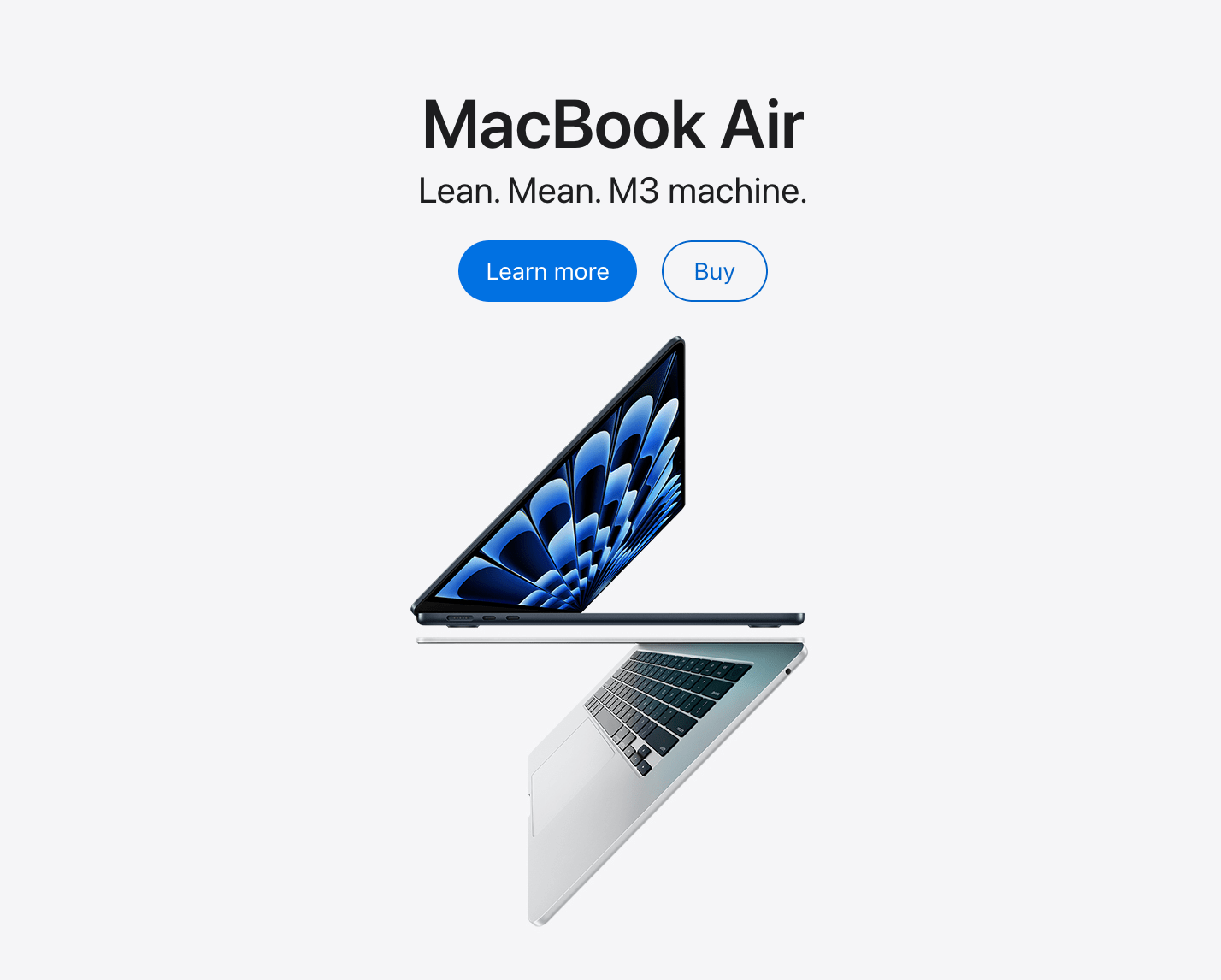
What you can learn from Apple
Keep things simple. Start with a great product and a clear value proposition, then find ways to create experiences for your customers. How can you insert it into their daily lives?
That builds brand loyalty and ensures your customers will continue to invest in your products, even if there are cheaper alternatives.
McDonald’s
Love it or hate it, there’s no denying the genius of the McDonald’s golden arches. One of the reasons behind its success is the consistency of its product brand.
You can order a Big Mac anywhere in the world and it will taste the same. This creates an emotional familiarity and builds customer loyalty.
Mix that with a powerful brand voice, visual identity, and stellar products and you’ve got yourself a winner.
While McDonald’s corporate brand has made a colossal shift, the products remain very much the same.
So has the iconic red-and-yellow color palette and logo. This visual consistency across all product branding, advertising, and in-store experiences has helped turn it into a trusted brand.
Happy Meals, McFlurrys, the Big Mac … we all know exactly what these products are and who they’re for.
McDonald’s gives us a masterclass on how to evolve your corporate identity, while staying true to your product. Convenience, affordability, and consistency are the pillars that have transformed it into the cultural phenomenon that it is.
Innovative advertising, brilliant storytelling, and a strong strategy are what keep us hooked.
What you can learn from McDonald’s
McDonald’s demonstrates how to target a submarket with your products. Let’s take the Happy Meal.
This product is for kids. It has a strong value proposition and packaging that appeals to kids.
But then we have the Egg McMuffin.
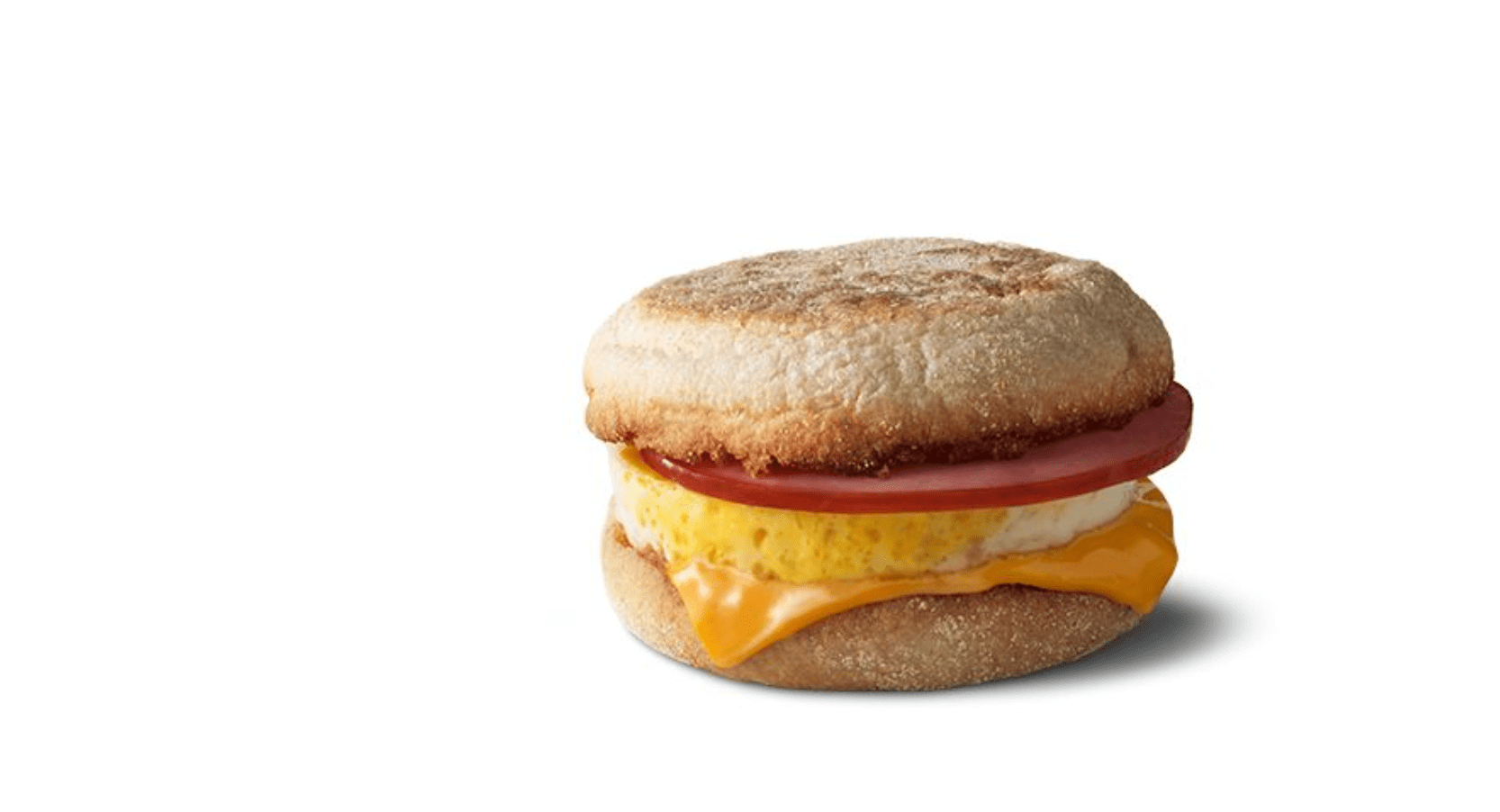
McDonald’s product branding strategy targets smaller submarkets most likely to buy a specific product.
Created by a McDonald’s franchisee in the early seventies, the Egg McMuffin is the fast-food lover’s take on Eggs Benedict. It also prompted the “Where Quality Starts Fresh Every Day” slogan.
This product was totally unique and started a whole new concept of breakfast on the go (and a new market). It also catered to a different audience: busy professionals rushing to work.
The big lesson here is not to be afraid to target a very narrow submarket with your products. It worked for McDonald’s.
IKEA
What do you think of when you hear the name Ikea? Functionality? Affordability? Classic Scandi design?
IKEA knows its customers better than most brands. It understands what they value (stylish but affordable furniture) and makes that its top priority.
IKEA also listens to its customers’ concerns about sustainability and commits to eco-friendly practices to meet those concerns.
It even knows that you’re probably going to fight with your partner as you assemble your new furniture, and pokes fun at this in advertising campaigns.

IKEA has a strong product brand that focuses on its customers first and foremost. This has helped it carve out a space in the market.
The big question is, how does IKEA get us to form emotional connections with flat-packed furniture?
Well, for a start, it inspires us to be creative with its products. If you head over to YouTube or Pinterest, you’ll find thousands of videos of DIYers doing cool and inventive things with their flatpack IKEA dressers.
The same goes when you step into a store. You’ll see creative and exciting ways to style your furniture, creating a memorable shopping experience.
What you can learn from IKEA
It doesn’t matter that the product names are impossible to pronounce or that you have to build them yourself. Why? Because IKEA is a customer-centric brand.
It makes product and marketing decisions based on its customers’ experiences and how it can make their lives easier. Even down to the super cheap (and surprisingly delicious) cafeteria in each store, because IKEA knows its customers need to recharge during their shopping trips.
When you base your product branding strategy on customer research, you’re bound to hit a home run.
Red Bull
When I think of Red Bull, I immediately think of how well it encapsulates American values.
You can see the famous “Red Bull Gives you Wiiings ” slogan all over sporting events like Formula One.
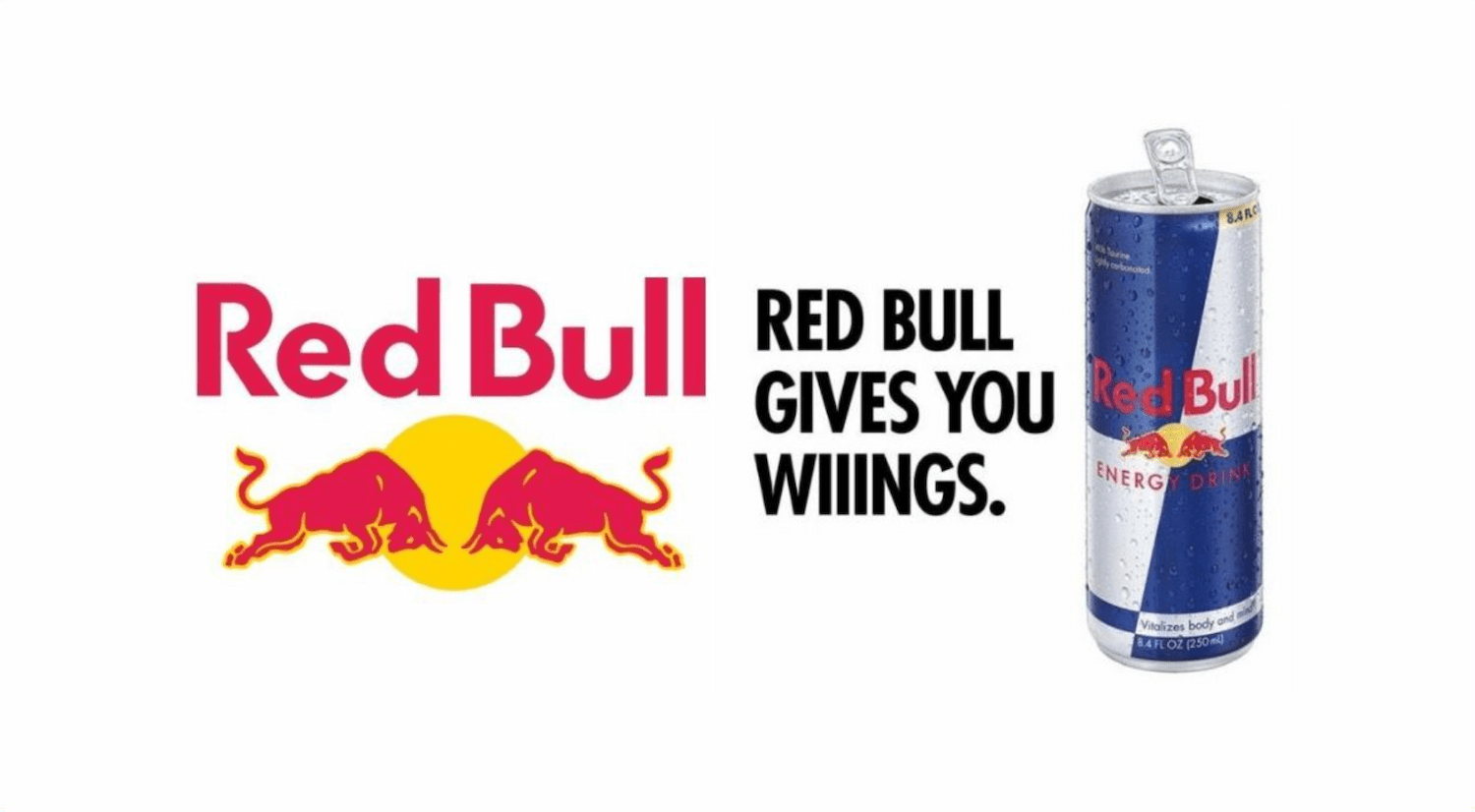
Red Bull’s product brand strategy perfectly resonates with its audience, sparking customer loyalty.
This is pretty incredible (especially considering that it’s actually an Austrian brand).
Even the slogan is daring, leading the brand to be sued multiple times for false advertising.
Does it offer lots of product varieties? No. But Red Bull immediately makes it clear what you’re getting: an energy drink. Sure, you can choose from different flavors, but there’s only one product on the table.
That’s because Red Bull has a unique product that it markets to a specific audience. The product has an edgy personality that doesn’t mind courting controversy.
Another reason for its longtime success is its distinctive brand positioning. Not just an energy drink, it’s now tightly associated with an adrenaline-filled lifestyle.
In the process, it has created an emotional connection with its audience and a strong community that promotes its products for free.
Experiential marketing — like sponsoring music festivals and soapbox racing events — deepens this emotional connection to the brand and its hero product.
What you can learn from Red Bull
Be bold. Create a unique identity for your product and tailor your packaging, messaging, and marketing efforts to your target audience.
Build a community of product enthusiasts by sponsoring events and experiences that speak to your target customers.
And if your brand is all about disruption, don’t be afraid to break the rules from time to time (within reason).
FAQs about product branding
What’s the difference between product branding and corporate branding?
Product branding creates an identity for a specific product that a company offers. On the other hand, corporate branding covers the entire company’s reputation.
One big difference is that company branding tends to be more permanent, while product branding is likely to change over time
What are the four stages of branding?
When focusing on the customer journey, we can break product branding down into four stages:
- Awareness – Making people aware that your brand exists and capturing your audience’s attention. Marketing strategies include advertising, PR, and social media campaigns.
- Association – Building positive associations with your brand in your audience’s minds. Strategies include defining clear messaging, a consistent brand identity, and delivering a great customer experience.
- Differentiation – Carving out a unique market position to stand out from your competitors. Highlighting your product’s USP and sending targeted messaging to audience segments can help achieve this.
- Allegiance – Turning buyers into brand advocates by creating a strong emotional connection and building community with customer loyalty programs.
How can you tell if your product branding is failing?
There are some tell-tale signs that your product branding may not be performing as well as it should. Here are the main red flags to watch out for:
- Stagnant or declining product sales
- You’re losing your market share, and your competitors are gaining traction
- You’re struggling to attract new customers, and churn rates are creeping up
- Brand recognition and engagement are plummeting
- Sentiment is negative (customer complaints and bad reviews are up)
- Your marketing channels are sending mixed branding messages
- Your product’s visual identity doesn’t line up with your company values
Wrapping up
I hope this survival guide gives you some actionable ideas on how to elevate your (or your client’s) product branding. When your messaging, packaging, and advertising align with your product, that’s when the magic happens.
And if you need a foolproof way to review your product packaging and artwork, try Filestage. Grab a free trial and cut approval time by 30% today.

